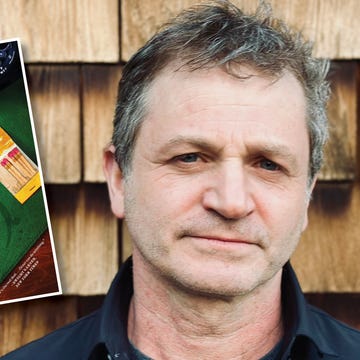When the Caliente racetrack in Tijuana abruptly closed after 77 years, dozens of greyhounds were left to an uncertain fate. In Alta Journal’s Issue 32, writer Donna Wares follows the urgent efforts of rescue groups and volunteers who rushed to evacuate the dogs across the border. Sandy Hightower, president of the nonprofit GreySave, speaks with Alta Live to share her perspective on coordinating the rescue effort. She’s joined by GreySave adoption representative Victoria Coleman, whose long history with greyhounds has shaped her work. Join us for a moving conversation about the West Coast’s last racing dogs, the communities fighting for them, and the enduring bonds between people and their hounds.
ABOUT THE GUESTS
Sandy Hightower is the president of GreySave and has dedicated decades to rescuing and rehoming greyhounds. She played a key role in the massive rescue effort in Tijuana, and she has coordinated placements with partner groups in Texas, southern Arizona, and Salt Lake City. A longtime foster, she has personally cared for more than 250 greyhounds.
Victoria Coleman is an adoption representative with GreySave, dedicated to rescuing and rehoming greyhounds. She has worked with GreySave for more than a decade and volunteers annually with Galgos del Sol in Spain, supporting the rehabilitation of galgos, Spain’s sighthounds.
Here are some notable quotes from the event:
- On the biggest greyhound misconception: “The biggest misconception is people think that greyhounds need a ton of exercise. You can walk them once a day, a couple of blocks, and they’re totally happy with that. There’s people, even in our application, they’re like, ‘Oh, I’m a runner. I’m looking to adopt a dog that can be my running partner.’ And I was like, ‘Well, then you should probably get a border collie.’” —Coleman
- On the Tijuana mission: “It really was a group effort between GreySave and FastFriends, and then one group, the Greyhound Adoption Center, had already closed down, but we did work with some of the former people who were key players in that. And then also Operation Greyhound. Between the three groups, we got 150 or more dogs out in one month. It was just really crazy because we just didn’t know, if all the money was gone, what was going to happen to the dogs. We knew it was critical to get them out right when they said they needed them out.” —Hightower
- On placing greyhounds: “When it comes to, like, a home, it can be an apartment, or it can be a home with a backyard—it really just depends on the dog. I think we more so look at the profile of the dog and then look at the adopters, and we’re like, ‘Oh, this dog definitely needs a backyard.’ Or if it’s an older, mellow dog, it’ll go to an older person, maybe in their late 60s, early 70s, or even older than that. It’s more about, we look at the profile of the dog, and then we look at the applicants, and we look at where that dog would thrive.” —Coleman
Check out these links to some of the topics brought up this week.
- Read “A Race to the Finish,” by Donna Wares.
- Foster a greyhound.
- Sign up to be a GreySave volunteer or ambassador.
- Learn more about GreySave and donate to its mission.
- Find out more about Galgos del Sol, in Spain.
- Dig deeper into greyhound rescue with FastFriends and Operation Greyhound.•











